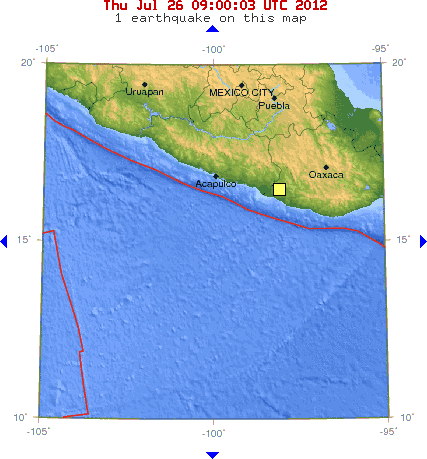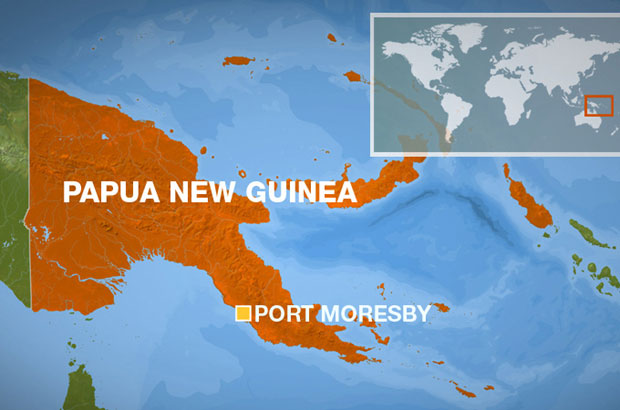
© thecomingcrisis.blogspot.comA magnitude 5.2 earthquake has struck Oaxaca, Mexico at a depth of 13.2 km (8.2 miles), the quake hit at 05:25:29 UTC Tuesday 24th July 2012
The epicenter was 11 km (6.8 miles) SSE of San Juan Cacahuatepec, Mexico. No Tsunami Warning Issued - No Reports of Damage.
A magnitude-5.2 earthquake rocked southern Mexico early Tuesday, but there are no damage or injury reports, the U.S. Geological Survey, or USGS, said.
The quake's epicenter, which was located at a depth of 13.2 kilometers (8.2 miles), was 11 kilometers (6.8 miles) south-southeast of San Juan de Cacahuatepec, a town in Oaxaca state, and 24 kilometers (14.9 miles) north of Santiago Pinotepa Nacional, another town on the southern state's Pacific coast.
The earthquake occurred at 12:25 a.m, the USGS said.
Mexico's National Seismological Service confirmed the temblor on its Twitter and estimated the magnitude at 5.62.
The earthquake was felt in Mexico City, but officials have not reported any injuries or damage, media outlets said.
A magnitude-7.4 earthquake on March 20 killed two people in southern Mexico and was followed by dozens of strong aftershocks.
On April 2, a magnitude-6.0 earthquake rocked an area between the southern states of Guerrero and Oaxaca.
Mexico, one of the countries with the highest levels of seismic activity in the world, sits on the North American tectonic plate and is surrounded by three other plates in the Pacific: the Rivera microplate, at the mouth of the Gulf of California; the Pacific plate; and the Cocos plate.
That last tectonic plate stretches from Colima state south and has the potential to cause the most damage since it affects Mexico City, which has a population of 20 million and was constructed over what was once Lake Texcoco.
The magnitude-8.1 earthquake that hit Mexico City on Sept. 19, 1985, was the most destructive to ever hit Mexico, killing some 10,000 people, injuring more than 40,000 others and leaving 80,000 people homeless.
The most recent powerful quake to hit Mexico was a magnitude-7.6 temblor that rocked Colima on Jan. 21, 2003.


